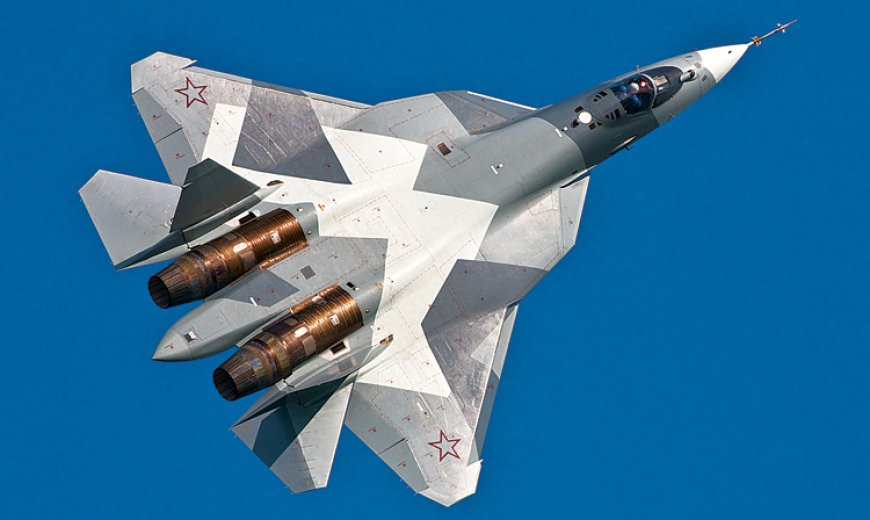India Greenlights Fifth-Gen Stealth Fighter Program Amid Rising Geopolitical Tensions
India has approved its fifth-generation stealth fighter jet program, aiming to modernize the Indian Air Force. Explore what this means for national defense, regional dynamics, and global aerospace collaborations.

India Approves Fifth-Generation Stealth Fighter Program: A Strategic Leap Forward
In a decisive move that signals a new era in India's defense preparedness, the Government of India has officially approved the indigenous development of a fifth-generation twin-engine stealth fighter aircraft. The project, spearheaded by the Aeronautical Development Agency (ADA) under the Defence Research and Development Organisation (DRDO), is seen as a significant push to modernize the Indian Air Force (IAF) and assert India’s strategic autonomy in aerospace technology.
The decision, which comes amid simmering tensions with neighboring Pakistan and China, places India among an elite group of nations developing advanced stealth technology. The new aircraft is expected to be a cornerstone of India’s air dominance strategy over the next two decades.
Why a Fifth-Generation Fighter Jet Matters for India
The Indian Air Force currently operates well below its sanctioned strength of 42 fighter squadrons, raising concerns about its ability to manage a two-front war scenario. The approval of this program aims to fill that critical capability gap and reduce India’s reliance on foreign platforms such as the Rafale, Sukhoi Su-30MKI, and the aging MiG series.
Fifth-generation jets are characterized by features such as:
-
Advanced stealth with reduced radar cross-section
-
Supercruise capabilities (sustained supersonic flight without afterburners)
-
Advanced avionics and sensor fusion
-
Network-centric warfare readiness
-
High agility and precision strike capabilities
This jet is expected to be developed under the Advanced Medium Combat Aircraft (AMCA) initiative, with the first prototype likely to roll out within the next five to seven years.
Collaborations and Industry Participation
According to The Hindu Business Line, the program will be executed through a Special Purpose Vehicle (SPV) model, involving ADA, Hindustan Aeronautics Limited (HAL), and select private Indian firms. This is in line with the government’s "Atmanirbhar Bharat" (self-reliant India) campaign, which emphasizes domestic defense manufacturing.
The Ministry of Defence has also called for foreign collaboration in specific components like engines and radar systems. Experts believe India may consider partnerships with established players such as Safran (France) or Rolls-Royce (UK) to co-develop the engine platform—currently considered one of the most complex aspects of fighter jet engineering.
For in-depth analysis of India’s engine development roadmap, visit IDRW.org’s special coverage.
Strategic Timing Amid Regional Volatility
The timing of this approval is crucial. It follows a recent four-day border flare-up with Pakistan, during which India's air superiority was again brought into question. Additionally, China's aggressive military buildup along the Line of Actual Control (LAC) has necessitated a proactive shift in India’s defense strategy.
The stealth fighter program is not merely a technological upgrade—it is a strategic message. It signals India's intention to move beyond reactive defense posturing and assert a technologically superior, deterrent-ready air force.
According to an analysis by ORF (Observer Research Foundation), India's pursuit of fifth-generation fighters aligns with its vision of becoming a major aerospace power in Asia.
Budget and Timeline: What We Know So Far
The project is expected to cost between ₹15,000 to ₹20,000 crore in its first phase, covering prototype development, testing, and certification. The aircraft will undergo rigorous flight testing over the next decade, with serial production likely to begin by the early 2030s.
Initial reports suggest that the fighter will be equipped with indigenous systems such as:
-
Uttam AESA Radar
-
Infrared Search and Track (IRST)
-
Electronic Warfare suites
-
DRDO-developed mission computers
Expert Reactions and Future Outlook
Defense analysts have widely welcomed the move. Air Marshal Anil Chopra (Retd), Director General at the Centre for Air Power Studies, told Defence Aviation Post that this project "will be a game-changer in redefining India’s air power doctrine."
However, concerns remain about bureaucratic delays, funding bottlenecks, and integration challenges that have plagued previous indigenous defense projects like the Tejas Light Combat Aircraft (LCA). Lessons learned from the LCA program are expected to inform the AMCA project, especially in testing and certification phases.
Conclusion: A Defining Decade for Indian Aerospace
India’s approval of a fifth-generation stealth fighter jet program is more than a defense acquisition—it’s a definitive step toward technological sovereignty in military aviation. As the global defense landscape continues to evolve with increasing reliance on unmanned systems, stealth technologies, and AI-assisted combat systems, this program will play a pivotal role in ensuring India’s relevance and readiness.
The coming years will be critical for turning this blueprint into airborne reality. If executed efficiently, it could redefine India's standing in the global military-industrial complex and mark the beginning of a new chapter in strategic self-reliance.



















































